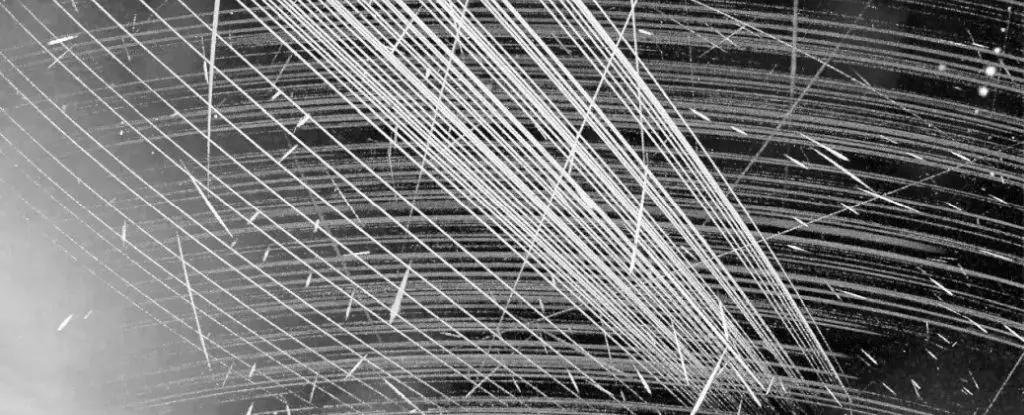The night sky, once a serene canvas for stargazing and astronomical pursuits, is becoming increasingly dominated by swarming satellites. This phenomenon, largely driven by companies like SpaceX and its Starlink program, is raising significant concerns among astronomers and space scientists alike. As satellites multiply in low-Earth orbit, an escalated risk of radiation emissions threatens to drown out critical radio signals used in astronomical research. The issue, manifesting particularly with the latest generation of Starlink satellites, poses a dire challenge to preserving the integrity of radio astronomy.
Impacts of Radiation Emission from Satellites
Recent studies reveal that the new second generation of Starlink satellites, particularly the v2mini models, are emitting radiation levels up to 32 times greater than their predecessors. This excessive leakage occurs within the radio frequency bands that are crucial for radio astronomy, which relies on pristine wavelengths to detect faint signals from the cosmos. According to astronomer Cees Bassa from the Netherlands Institute for Radio Astronomy (ASTRON), the unintended emissions from these satellites are about 10 million times brighter than some of the faintest astrophysical sources observable through instruments like the LOw Frequency ARray (LOFAR).
The ramifications of these findings extend beyond mere inconvenience. It parallels the brightness disparity between the faintest stars visible to the naked eye and the glaring luminosity of a full moon. As SpaceX continues to deploy approximately 40 new satellites per week, the problem is compounding. If left unchecked, it threatens to inundate the radio spectrum with artificial noise, making it exceedingly difficult for astronomers to discern genuine astronomical phenomena.
Spectral Pollution: The Other Kind of Light Pollution
While concerns regarding visible light pollution from satellite swarms have gained significant attention, radio frequency contamination is an equally pressing issue that warrants more discourse. A study conducted last year revealed that satellite constellations are leaking radio waves across various frequency ranges, including those vital for communication downlink. Alarmingly, some of this radiation encroaches into the 150.05-to-153 megahertz range, further endangering radio astronomical endeavors.
Such spectral pollution restricts the ability of scientists to make astronomical observations without interference, which is problematic not only for research but also for technological innovations stemming from these studies. From advancements in Wi-Fi technology to GPS and medical imaging, the consequences of impairing radio astronomy could ripple through multiple sectors, resulting in unforeseen challenges for humanity.
Currently, a significant gap exists in regulatory frameworks governing the emission of unintended electromagnetic radiation from satellite constellations. As the number of satellites in low-Earth orbit swells—OneWeb alone has 634 satellites and Amazon plans to launch over 3,000—it becomes imperative to implement guidelines that address these emissions proactively. Researchers advocate for the establishment of comprehensive regulations to mitigate the risks associated with increased satellite deployments.
Moreover, the onus also falls on satellite companies like SpaceX to engage in transparent data practices. By analyzing their satellites’ radiation emissions, these companies can identify problem areas and seek solutions to minimize their impact. As engineer Federico Di Vruno from the SKA Observatory states, setting the standards for sustainable practices in space should not merely be an afterthought but a core responsibility for companies shaping the future of low-Earth orbit.
A Collaborative Future: Industry and Regulators Unite
The ongoing clash between satellite proliferation and the preservation of radio astronomy highlights a crucial inflection point for humanity’s interaction with space. A unified effort from both the industry and regulatory bodies is necessary to proactively safeguard our astronomical capabilities. The future of our understanding of the cosmos depends on our ability to communicate effectively with celestial phenomena; thus, prioritizing regulations that address the unintended emissions of satellite networks should be a paramount concern.
Jessica Dempsey, general and scientific director at ASTRON, summarizes the sentiment perfectly: “We just need the regulators to support us, and the industry to meet us halfway.” Without concerted efforts to address these burgeoning issues, we risk compromising the very technologies that have propelled human civilization forward while jeopardizing our ability to engage with the universe meaningfully.
The challenge posed by satellite radiation pollution is a formidable and nuanced dilemma. As the number of satellites in orbit continues to rise, we must act decisively to mitigate the potential fallout on the field of radio astronomy. The urgency is clear: both the scientific community and satellite companies must work collaboratively to develop sustainable policies that protect our shared cosmic heritage. The pursuit of knowledge and exploration of the universe should not come at the expense of losing sight of the faint signals that guide our understanding of the cosmos. It is time to rethink our approach and prioritize preserving the night sky’s integrity for future generations.

Leave a Reply